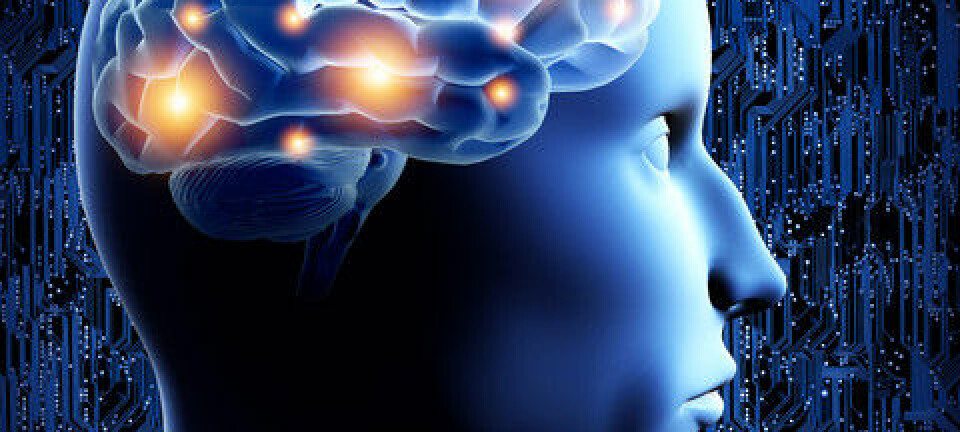
What in the world is consciousness?
Our perception of the world around us, and ourselves within it, are ‘controlled hallucinations’ that the brain uses to help keep itself alive
You wake from a dreamless sleep and a world appears. More than just a world: an entire inner universe, populated with colours, sounds, shapes, smells, tastes and touches, all organised into a coherent conscious scene filled with objects, places, and people. And at the centre of all this is the unique experience of being you – the experience of being the subject of experience, of being a conscious self in the world.
How this happens, how this flowering of subjectivity depends on the tofu-textured meat-machine in between your ears, is one of the greatest challenges in science and philosophy.
Somehow, the brain – nested within the body within the world – is giving rise to a conscious experience, your conscious experience, right here and right now. The question is how?
How does the combined activity of the 90-billion-or-so neurons inside a typical brain add up to a conscious experience, to any conscious experience?
Why, indeed, is there such a thing as consciousness at all? And is consciousness actually a ‘thing’?
The hard and the easy problem of consciousness
The mystery of how any arrangement of physical stuff could generate or underpin a conscious experience is often called the ‘hard’ problem of consciousness.
The name comes from the suspicion – and philosophical argument – that no solution could ever do the job. That no story told in the language of atoms or molecules, let alone neurons, could ever cross the explanatory gap between mere physical stuff and the seemingly non-physical nature of subjective experience. And that nothing will ever allow us to fully explain the ‘redness of red’ or the warmth of a log fire -- what philosophers call ‘qualia’.
The ‘hard’ problem is usually set in contrast with the ‘easy’ problem, which is figuring out how the brain’s complex circuitry gives rise to behaviour and to the myriad functional capabilities of embodied brains that underlie perception, cognition, and action.
The ‘real’ problem of consciousness
These problems are only called ‘easy’ because there seems to be, in principle, no objection to their resolution in terms of physical mechanisms like networks of neurons. Mechanisms explain functions – that’s the standard business of science. The hard problem, however, remains untouched.
My preferred approach to this conundrum is to focus on what I’ve called, slightly provocatively, the ‘real’ problem of consciousness. This is the problem of accounting for properties of conscious experiences in terms of properties of the brain and body. Properties of consciousness are what we call phenomenological properties, such as the way visual experience is how it is, and not some other way. Properties of the brain and body are just that – properties of collections of brain cells and their connections, all wrapped into the fleshy machine of the body. A good ‘real problem’ example is that when we have visual experiences we tend to describe them in terms of objects, while emotional experiences do not have the same sense of ‘objecthood’. What is it about the way the visual system works, compared to systems for emotion, that explains this difference?
The ‘real’ problem differs from the hard problem, because it is not about explaining how consciousness arises from physical systems (or perhaps the other way around). Neither is it the easy problem, because the focus of explanation is not on what systems do – their functional or behavioural properties – but on what things seem like within the sphere of conscious experience.
Caption in here (Video: TED Talks).
Science has a way of solving ‘unsolvable’ problems
There is an imperfect analogy here with life. Not so long ago, many people thought that the property of ‘being alive’ could never be explained by any sort of physical mechanism. Some special sauce – an élan vital – was needed.
But as biologists got on with the job of accounting for the properties of living systems, like metabolism, reproduction, or homeostasis, in terms of physical and chemical mechanisms, the basic mystery of what ‘life’ is started to recede.
The idea that a scientific, mechanistic account of life is in principle out of reach is now almost wholly rejected. Admittedly, life is not the same as consciousness, but the point is that by breaking a problem up into its constituent parts, intuitions about the limits of explanation can shift and recede.
In other words, you won’t know until you give it a go.
Breaking consciousness into parts
In my research group at the University of Sussex, UK, we break the problem of consciousness into roughly three parts:
- The first is conscious level – how to explain the difference between being conscious at all, and being unconscious – as in dreamless sleep, or under general anaesthesia.
- The second is conscious content – how to explain the subjective appearance of a conscious scene - objects, people, and places, its smells, colours and shapes - in terms of brain processes.
- The third is conscious self – how to explain the specific experience of being you, of being the subject of experience.
The strategy we follow is roughly the same for each of these sub-problems. The idea is to isolate a set of relevant ‘explanatory targets’ – the properties of conscious experience that we are trying to explain.
Next, we get very precise about these properties using mathematical descriptions and computational models. And finally, we use these descriptions and models to identify processes in the brain that have the same properties.
By doing so, we aim to build explanatory bridges from mechanism to phenomenology, so that a scientific account of consciousness can come into view.
Applying advanced math to demystify consciousness
Diving further in, there is much to say about each of these sub-problems, and about how they relate (a book is on the way!). Here, I can only give you a taste or perhaps a sniff.
For conscious level, we focus on properties that all conscious experiences share, no matter what the contents. The idea is that all conscious experiences are simultaneously highly informative (each conscious experience is one among a vast repertoire of alternative possibilities) and highly unified or integrated (each conscious scene is experienced as a unified whole).
This combination of ‘information’ and ‘integration’ can be written down mathematically in various ways, which can then be applied to data from brain imaging experiments. The upshot is a new generation of measures which can put a number to how ‘conscious’ someone is.
These measures are now showing great promise in, for example, tracking the depth of anaesthesia, or identifying remnants of consciousness following severe brain injury. Most of this work is being done in other laboratories around the world – with whom we are actively collaborating.
We perceive a sort of ‘controlled hallucination’
For conscious content, we take as a starting point the idea that perception is not a simple ‘read out’ of sensory data, it is a sort of ‘controlled hallucination’, a ‘best guess’ by the brain about the unknown and unknowable causes of its sensory inputs.
In this view, properties that we might typically ascribe an existence ‘out there’ in the world, like colour, shape, and so on, are actually properties of internal models, or predictions, that the brain uses to best anticipate the flow of noisy and ambiguous sensory signals in which it is continually immersed.
This idea has a long history, going back at least to the late 18th century philosopher Kant, but it is gaining a new relevance as the modern tools of brain imaging and computational modelling allow us to track how the brain formulates its predictions about the world, and to examine how these predictions relate to and shape our conscious experiences.
This research also helps us get a handle on unusual perceptual states, after all, if normal perception is kind of ‘controlled hallucination’, then hallucinatory experiences (such as in psychosis or psychedelia) are a form of ‘uncontrolled perception’ in which the brain’s predictions break free from the reins of sensory data.
The self is simply another ‘best-guess’ perception
Finally, there is conscious self, and the main insight here is that the self is not a separate entity (a soul?) that does the perceiving – the self itself is another perception, another brain-based best-guess about the causes of sensory inputs.
This time, though, the relevant sensory inputs come largely from the flesh-and-blood body, and the brain’s predictive models are less to do with figuring out ‘what’s out there’ and more to do with controlling or regulating the sensory flow. In this view, basic experiences of ‘being a body’ reflect how well or badly the brain is keeping itself and the body alive.
A good example here is the so-called ‘rubber hand illusion’. This uses a simple trick of stroking a fake ‘rubber’ hand in time with a person’s real hand, to generate the experience that the rubber hand is somehow part of the body – showing that even very basic experiences of what is, and what is not, the body, are also kinds of controlled hallucination.
Caption in here (Video: BBC).
Free will, identity, and sense of self all up for debate
For me, this view of self is the most transformational part of all the research I’ve been involved with, because it drives at the very heart of how we see ourselves painted into the canvas of nature.
My feelings of embodiment and emotion, my identity as a person, even my deeply-held sense of ‘free will’ and agency – all these fundamental aspects of selfhood emerge as different ways in which the brain generates and deploys predictive models in order maximise the likelihood of staying alive.
None of this undermines the value or ethical status of human selfhood, it just puts it into a richer context, a context in which we are more part of, and less apart from, the rest of nature.
Science and art are not rivals
I’ll finish this short essay by turning to a short video, made for the Future of StoryTelling Summit this year in New York, which draws the focus away from science and towards the arts.
There is often talk of a tension between ‘reductive’ science and the ‘humanistic’ arts, but this is a false opposition. Science and art, at their best, are equal partners in pursuit of enduring questions about the nature and meaning of human experience. And a science of conscious experience represents this common quest at its most vibrant. This short video animation explores some of the fascinating common ground between neuroscience, the visual arts, and the telling of stories.
Consciousness and Creation: The Neuroscience of Perception from Future Of StoryTelling on Vimeo. (Credit: Lazy Chief for FOST, 2018)
---------------
Read this article in Danish at ForskerZonen, part of Videnskab.dk









